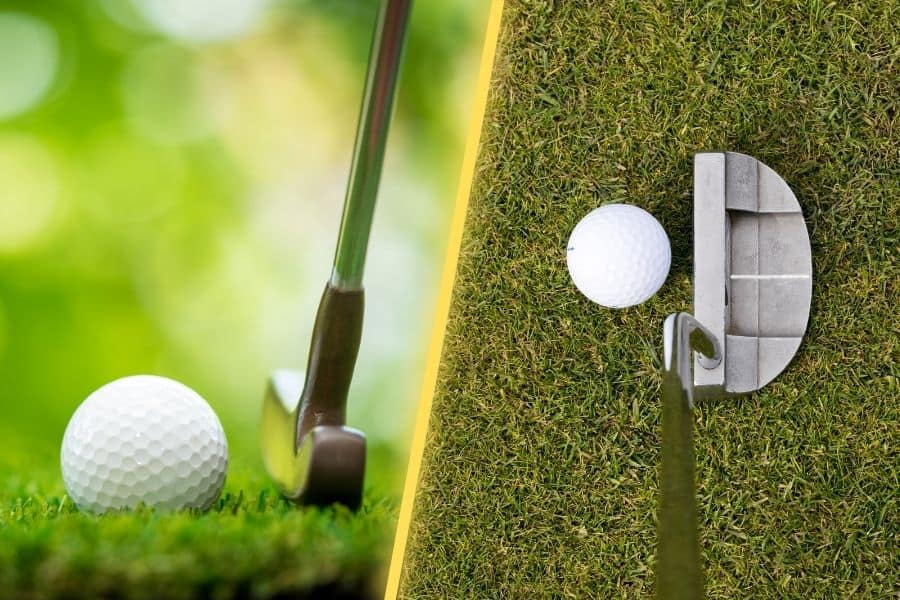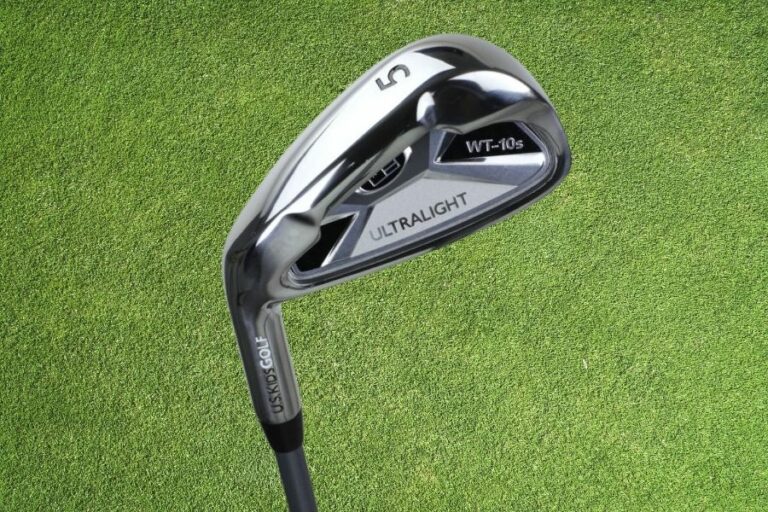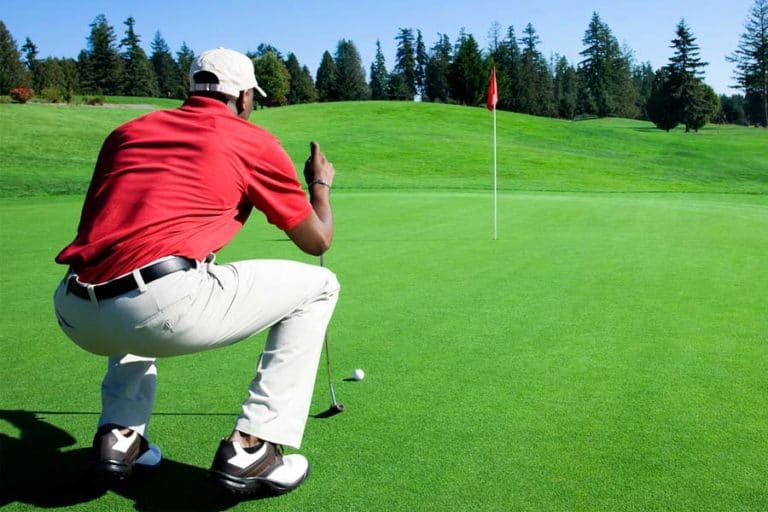Mallet vs Blade Putter: Which Putter Style Is Right For You?

Confused about which putter to choose- a mallet or blade? Learn about the differences to make the right decision.
The two most popular putters are the – Mallet and Blade, which differ based on the factors like the moment of inertia, sweet spot, forgiveness, and distance.
Depending on these factors, a golfer can choose the suitable one for the game of golf.
Here is a complete overview of both the putters and the benefits and drawbacks of each.
Mallet vs blade putters – The difference
Putters are known to be used to putt with short and low strikes while rolling down the ball into the hole from a short distance. Therefore, choosing one that improves your performance on the golf course is mandatory. In detail, let’s understand more about the two most common putters, i.e., Mallet and Blade.
What is a mallet putter?
Mallet-style putters come in different shapes and sizes, like squares, circles (semi-circles), and fangs.
They are sometimes even referred to as a “half moon.”
A mallet-style putter has a large club head around its face.
Due to the large size of the club head, there is more scope for the provision of aiming aids, alignment lines, and adjustable weighting.
The large sweet spot of the mallet putter allows golfers to make good contact with the golf ball.
Mallet putters tend to be more forgiving than blade putters due to their larger heads and higher MOI (Moment of Inertia).
This means that a mallet-style putter will be more resistant to twisting on off-center hits and thus help provide a better sense of direction.
Moreover, since they have large heads, they can be heavy.
Mallet putter pros:
- It is a putter known for its forgiveness.
- Mallets are available in different designs/ shapes.
- It works well for a straight-back-straight-through stroke.
- More consistent putts on longer greens.
Cons:
- A mallet is not recommended for an arc-style stroke.
What is a blade putter?
The blade-style putters are the traditional-looking clubhead.
It has a flat, rectangular-shaped putter head with a small face and minimal alignment features.
Moreover, its simple shape makes it lighter than the mallets.
The putter face of these clubs is often milled and made out of a single piece of metal.
Their name is derived from their signature straight blade-like shape.
A blade-style putter tends to have a smaller “sweet spot” and is less forgiving on off-center hits.
However, blade putters offer more distance control and accuracy due to their small head size and minimal offset.
They remain an integral part of the PGA Tour, featuring prominently in professional play.
Blade putter pros
- Blade putters work well with arc stroke putters
- Blade putters provide precision-based performance
- They perform well on fast greens
Cons:
- Less forgiving than a mallet putter
Factors to consider while choosing: blade vs. mallet putter?
Although both blade and mallet putters can provide similar results to a certain degree, golfers should assess the two types of clubs and determine which one is ideal for them.
1. Type of stroke
The decision to use a blade putter or a mallet putter should depend on the type of your putting stroke.
The mallet is suitable if you prefer a straight back and straight-through putting stroke.
For golfers with an arc-style stroke, the blade-style putter seems to be best as it has a flat and narrow face, which offers more control.
The kind of stroke you employ is essential in determining how your putter swings and the manner in which the ball comes off the clubface.
If you are using a blade-style putter, it is easy to rotate the clubface open and then square it up again. On the other hand, when handling a mallet-style putter, your best bet is to keep its face square throughout your swing.
However, many golfers play extremely well with a mallet and an arc-type putting stroke so it wouldn’t be the best use of its technology.
2. The level of experience
For novices and golfers with a higher handicap, the mallet putter is normally suggested due to its significant Moment of Inertia.
However, manufacturers are now crafting putters with an enhanced MOI to reduce the gap in forgiveness. If you’re a competent player, look for something that fits your playing style. On the other hand, if you’re inexperienced at golfing, search for a putter that has a high moment of inertia value.
3. Your budget
Putters used to be an affordable investment at around $100, but now the modern mallet style putters with their larger club heads cost more than five times that amount.
Several high-end putters are available, but a basic blade putter can still do the job.
Second-hand putters also make great bargains. Moreover, there are plenty of high-quality pre-owned putters to choose from.
A putter can outlast any other club in your bag as long as its face remains in good condition.
4. Your Stance/Setup
Your putting stance and setup will largely determine the type of golf putter you use. Generally, standing directly above your ball calls for a mallet-style putter with extra alignment lines and more solid construction.
If you are a golfer who prefers to stand a bit further away from the ball, a smaller blade will be the most suitable as it offers more control and accuracy.
Your putting stroke is best done with a blade putter as it allows you to rotate the clubface open.
If you prefer to stand a bit further away from the ball, a smaller blade design makes it easier to swing the putter a bit as opposed to keeping it straight back and straight through.
5. Weight of the club head
Mallet putters are often heavier than blade putters because of their larger size.
So, if you prefer a lighter club head for smoother swings, a blade putter is the ideal choice.
Conclusion
In summary, golfers should consider the abovementioned factors when choosing between a blade or mallet putter. Lastly, a putter fitting by a professional can provide invaluable guidance to help determine which type of putter is best for you. Ultimately, the right putter for you is the one that fits your game and helps you make more putts.








